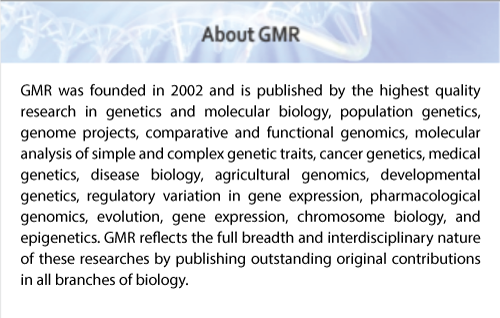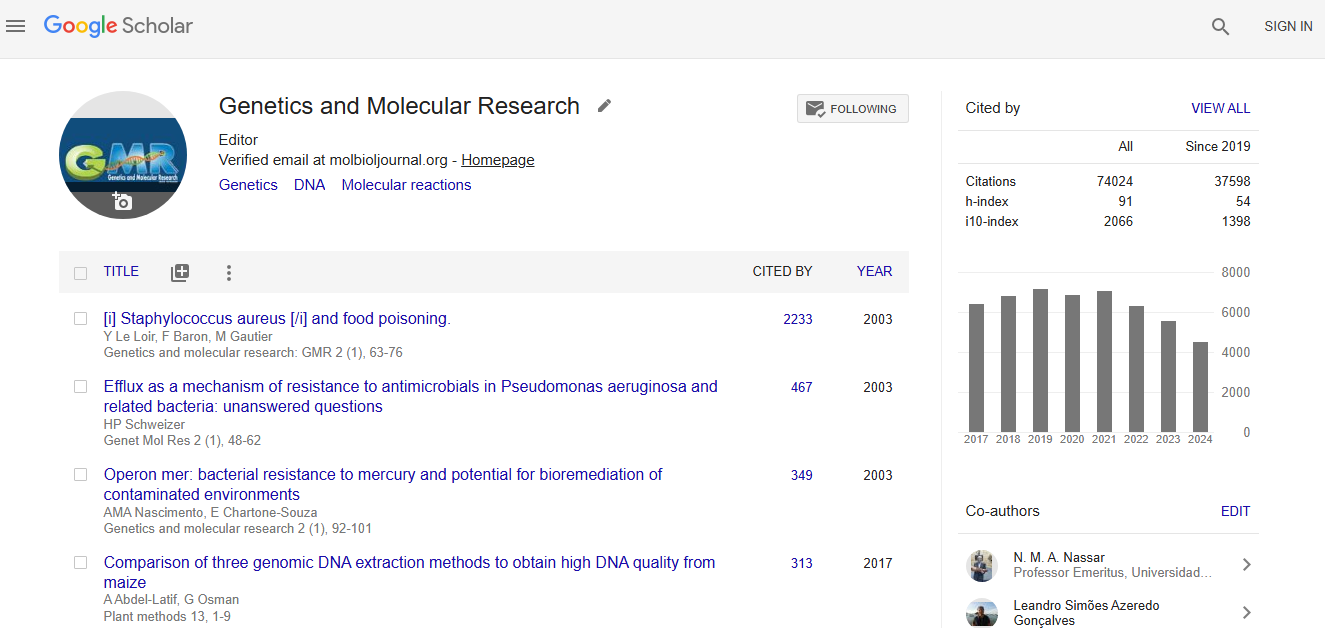Abstract
Genome wide cloning of maize meiotic recombinase Dmc1 and its functional structure through molecular phylogeny
Author(s): F. Etedali, B. Baghban Kohnehrouz, M. Valizadeh, A. Gholizadeh and M.A. MalboobiThe development of meiotic division and associated genetic recombination paved the way for evolutionary changes. However, the secondary and tertiary structure and functional domains of many of the proteins involved in genetic recombination have not been studied in detail. We used the human Dmc1 gene product along with secondary and tertiary domain structures of Escherichia coli RecA protein to help determine the molecular structure and function of maize Dmc1, which is required for synaptonemal complex formation and cell cycle progression. The maize recombinase Dmc1 gene was cloned and characterized, using rice Dmc1 cDNA as an orthologue. The deduced amino acid sequence was used for elaborating its 3-D structure, and functional analysis was made with the CDD software, showing significant identity of the Dmc1 gene product in Zea mays with that of Homo sapiens. Based on these results, the domains and motives of WalkerA and WalkerB as ATP binding sites, a multimer site (BRC) interface, the putative ssDNA binding L1 and L2 loops, the putative dsDNA binding helix-hairpinhelix, a polymerization motif, the subunit rotation motif, and a small N-terminal domain were proposed for maize recombinase Dmc1.
Impact Factor an Index

Google scholar citation report
Citations : 74024
Genetics and Molecular Research received 74024 citations as per google scholar report
